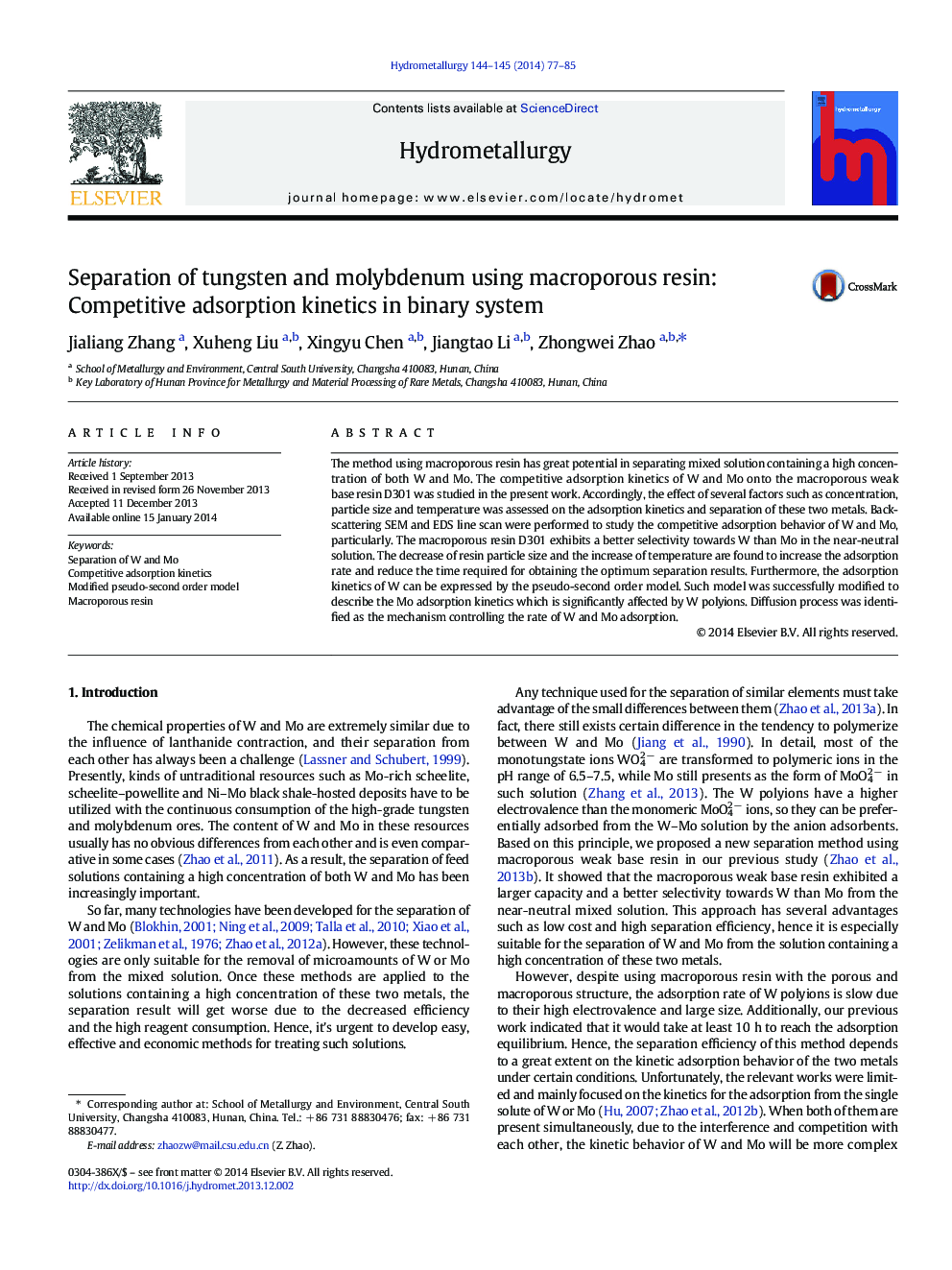| Article ID | Journal | Published Year | Pages | File Type |
|---|---|---|---|---|
| 212198 | Hydrometallurgy | 2014 | 9 Pages |
•D301 exhibits a better selectivity towards W than Mo in the near-neutral solution.•Smaller particle size and higher temperature reduce the required separation time.•The mechanism of Mo desorption can be described as displacement effect.•The pseudo-second order model was modified to describe the adsorption kinetics.•SEM and EDS line scan were performed to study the adsorption behavior.
The method using macroporous resin has great potential in separating mixed solution containing a high concentration of both W and Mo. The competitive adsorption kinetics of W and Mo onto the macroporous weak base resin D301 was studied in the present work. Accordingly, the effect of several factors such as concentration, particle size and temperature was assessed on the adsorption kinetics and separation of these two metals. Back-scattering SEM and EDS line scan were performed to study the competitive adsorption behavior of W and Mo, particularly. The macroporous resin D301 exhibits a better selectivity towards W than Mo in the near-neutral solution. The decrease of resin particle size and the increase of temperature are found to increase the adsorption rate and reduce the time required for obtaining the optimum separation results. Furthermore, the adsorption kinetics of W can be expressed by the pseudo-second order model. Such model was successfully modified to describe the Mo adsorption kinetics which is significantly affected by W polyions. Diffusion process was identified as the mechanism controlling the rate of W and Mo adsorption.
